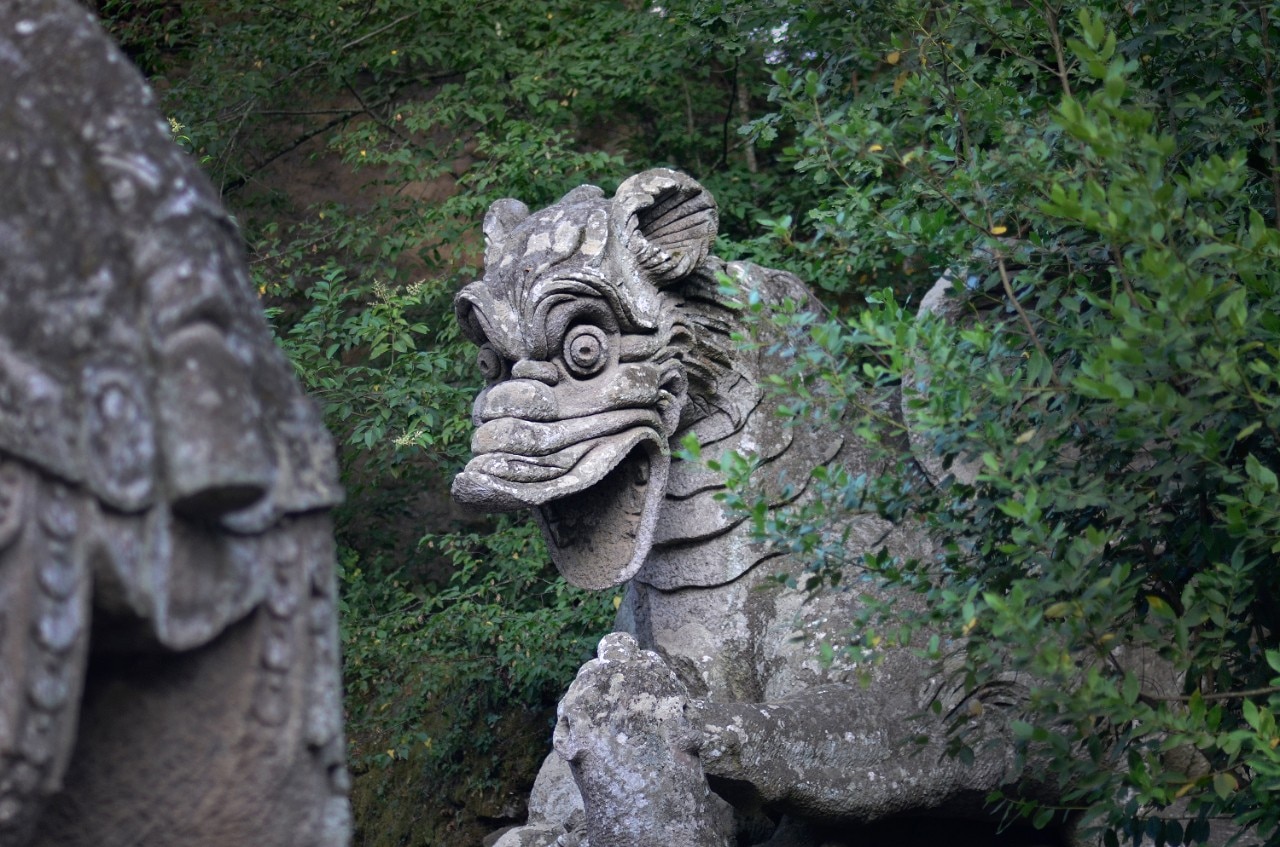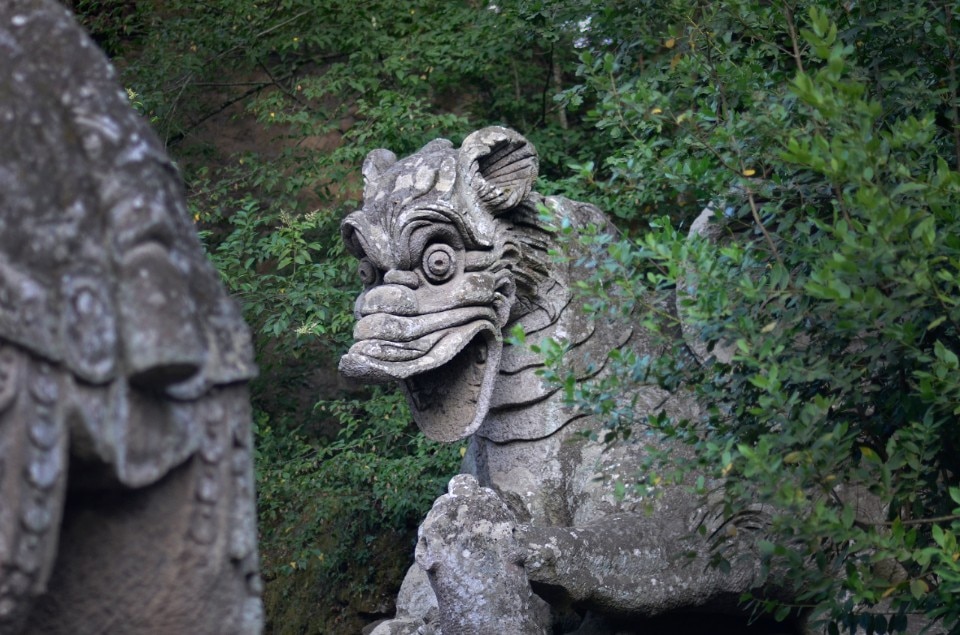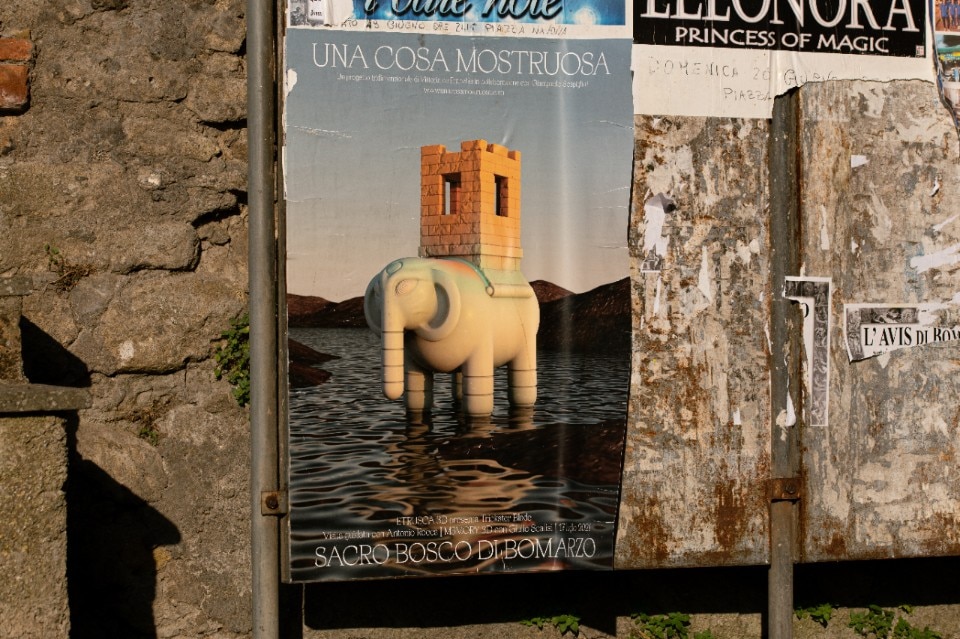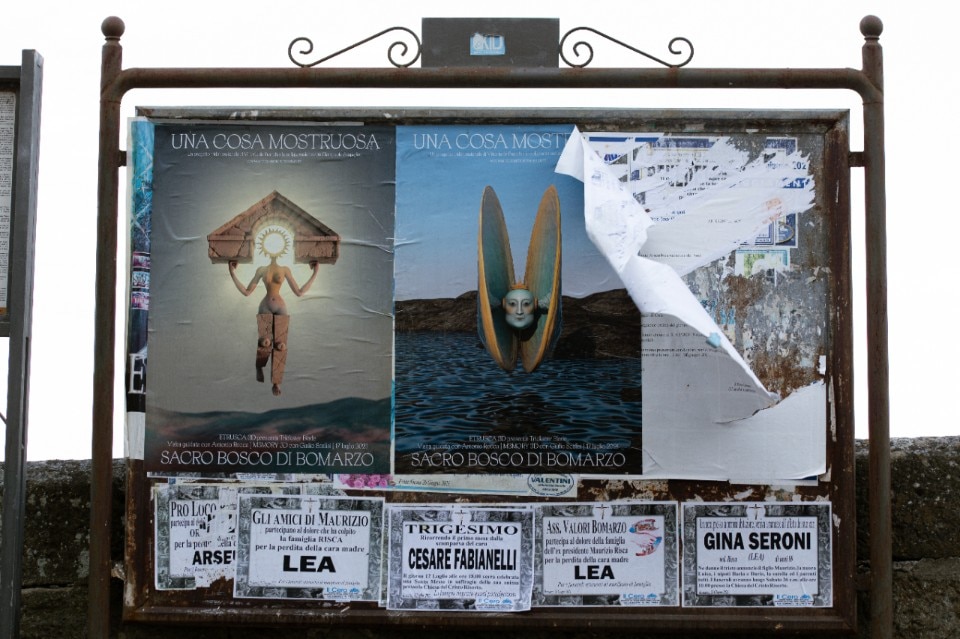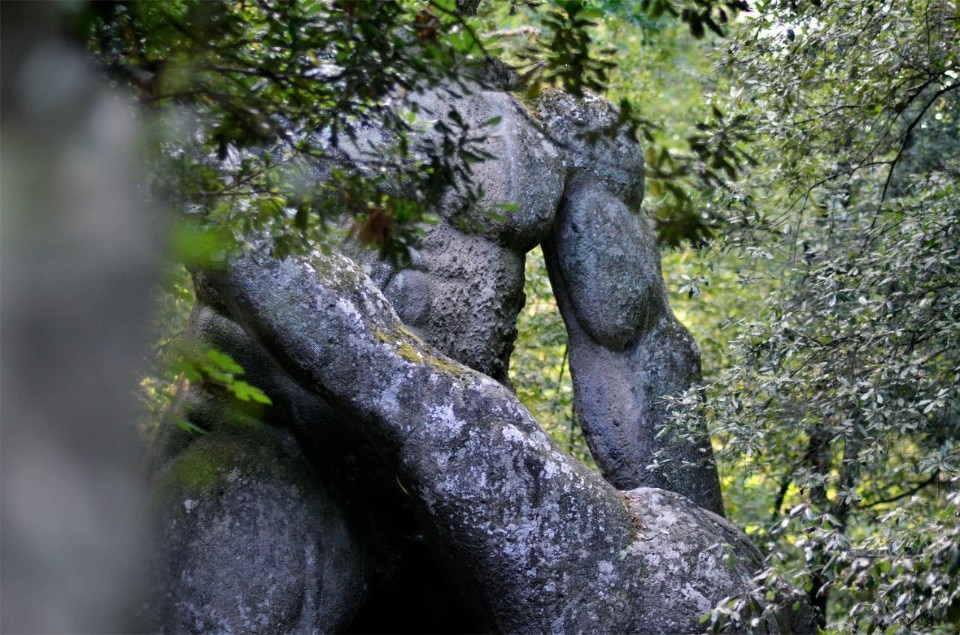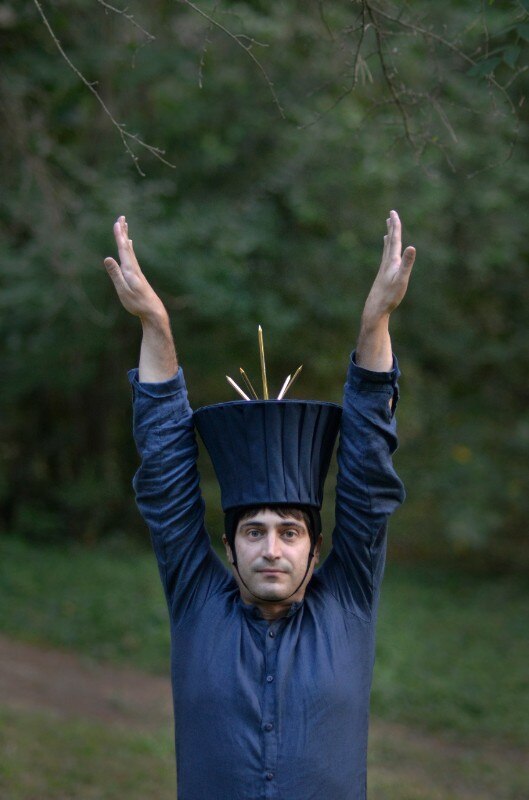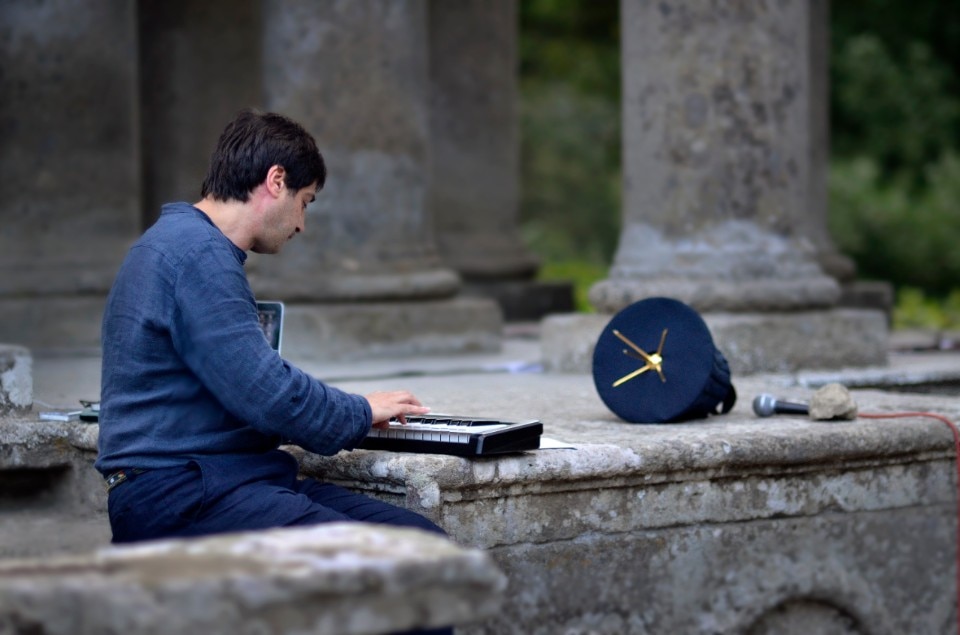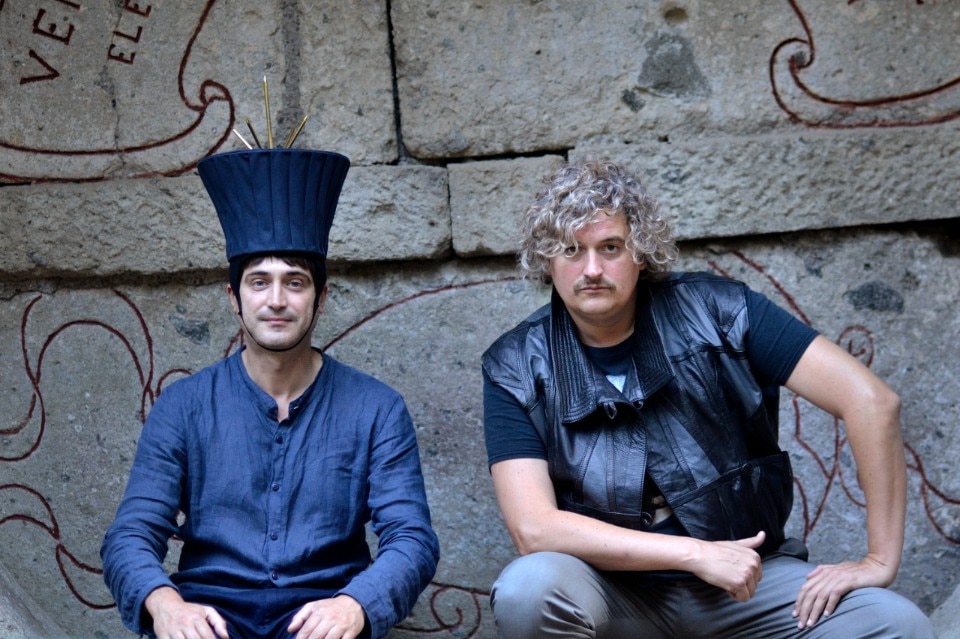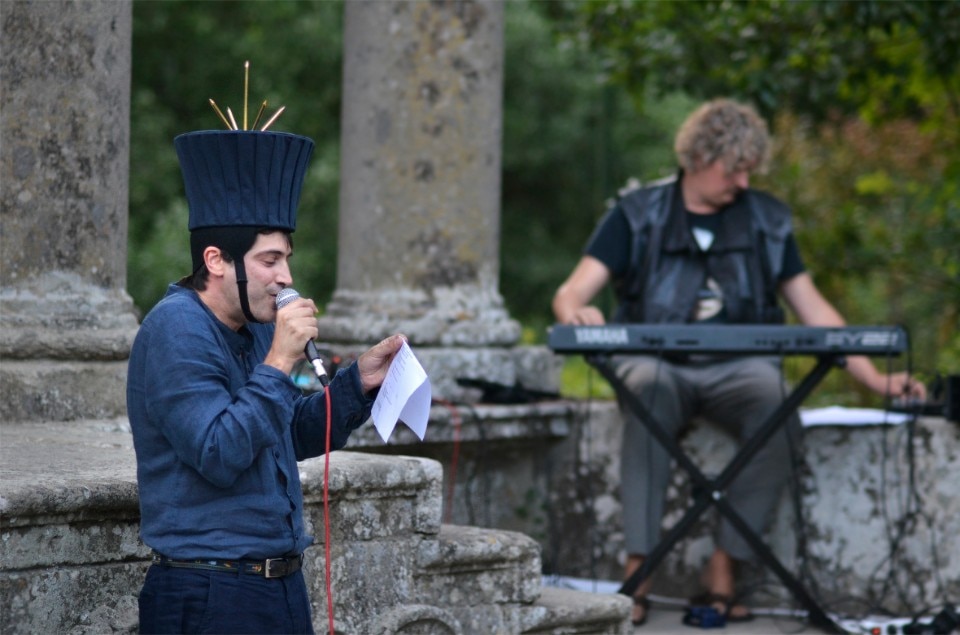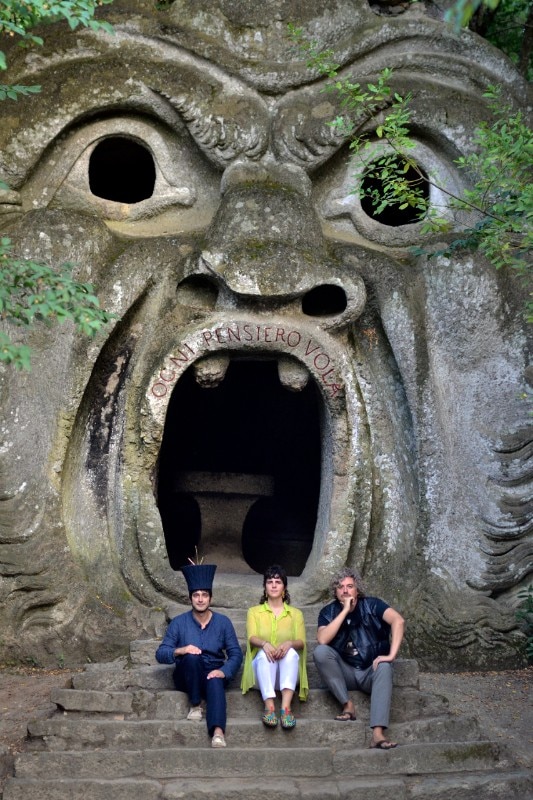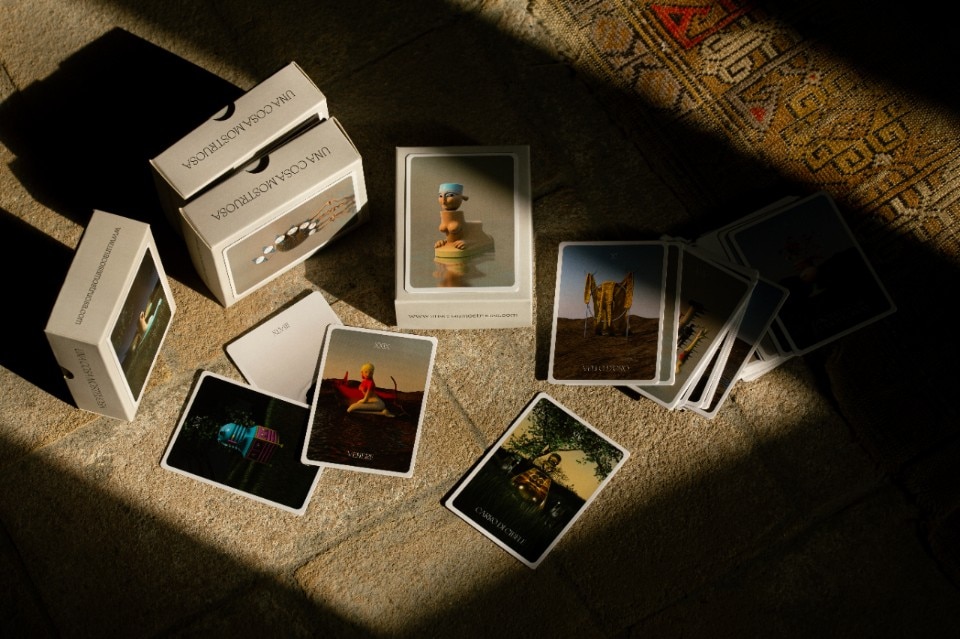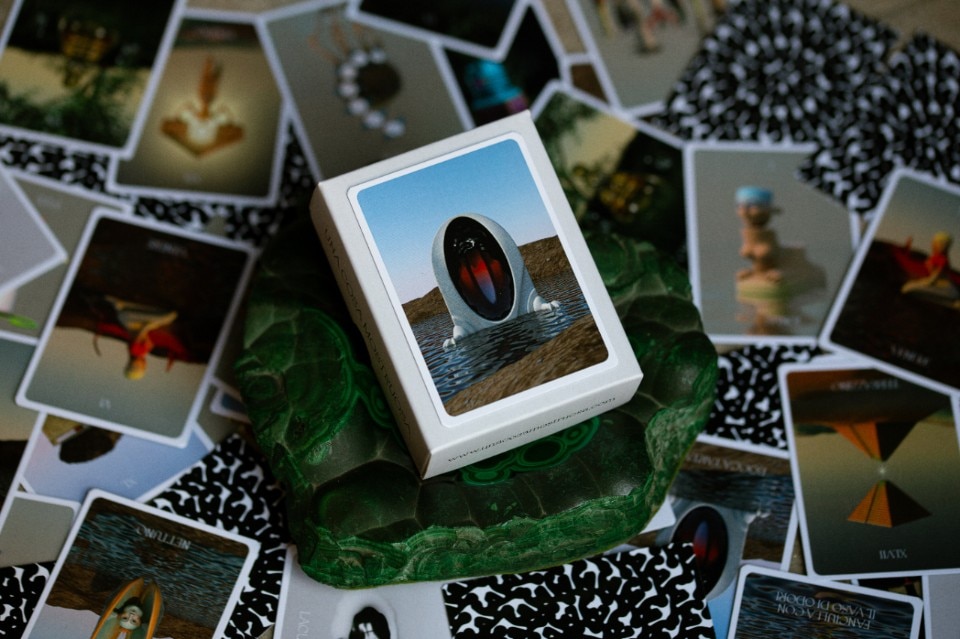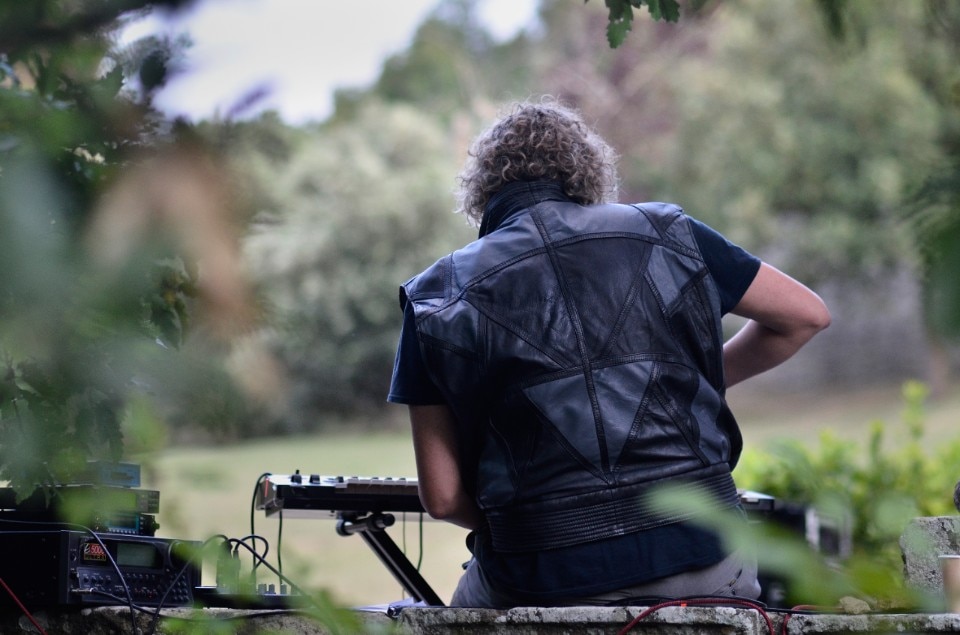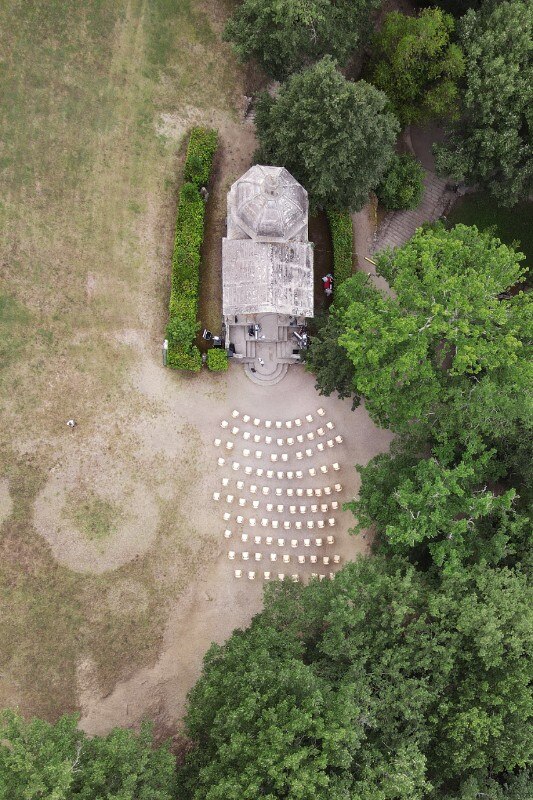"The world is a wood," says Professor Antonio Rocca as he guides us through the impressive sculptures of the Sacro Bosco of Bomarzo, the oldest theme park of the modern era. He has been studying it for decades, and even came to live in the area: "I don't recommend it: if now it's desolated, just imagine when all that was here was Vicino Orsini and his stones". And today, the topics of his research are the focus of an event that perhaps no one would have ever thought could happen.
"Una Cosa Mostruosa" was conceived as "a sound, narrative and visual odyssey on the cusp between Renaissance Hermeticism and Digital Ecology [...] through a triple intervention: a musical performance by Etrusca 3D (Francesco Cavaliere and Spencer Clark), a visual interpretation by Giulio Scalisi and a guided tour of the Sacro Bosco with Professor Antonio Rocca, who is an art historian and museologist who specialized in the history of Renaissance Tuscia, and probably the most knowledgeable person in the world about the history and symbolism of the Sacro Bosco.
Imagine that on 17 July 2021 a gap in space and time opened up between the hyper-present (or hyper-presence) and the distant past of the Park of the Monsters, a monumental complex designed by Prince Vicino Orsini in 1547. As the website states, "'Una Cosa Mostruosa' has at its core memory as virtuality and space".
"The symbolism of this place is linked to the advent of tarot cards as a divination instrument," Rocca tells us. At the time, what we now see as a sculptural trail in peperino stone, with huge grey statues devoured by the surrounding nature, was as colourful and complex as the symbolism with which it is imbued: "there was Jupiter Ammon, the god of the oracle, the Basilisk representing eternity, the idea that there is no distinction between the future and the eternal. Indeed, only when you combine the present moment and eternity can you reach a revelation".
And so, everything is connected, from the variation of the Memory game featuring the tarot cards designed by Giulio Scalisi, which stems from a reflection on memory (you can play the card game on the home page of the UCM site designed by Gluqbar), to the various references to Etruscan culture in the performance by Francesco Cavaliere and Spencer Clark, to the study of the hermetic symbolism of the Sacro Bosco, which has kept Professor Rocca busy for decades.
The Professor is also the voice that speaks in our ears as we walk with him down the initiatory path conceived by Prince Orsini. "God speaks a single, very high, hermetic and esoteric language, which has subsequently been declined in all religions," Rocca explains to us at the entrance to the park. "And the wisemen are those who get closer to the source of meaning, the original truth before the corruption of language and time, following backwards an imaginary line that connects the Greeks, the Egyptians, the Etruscans, and the Romans".
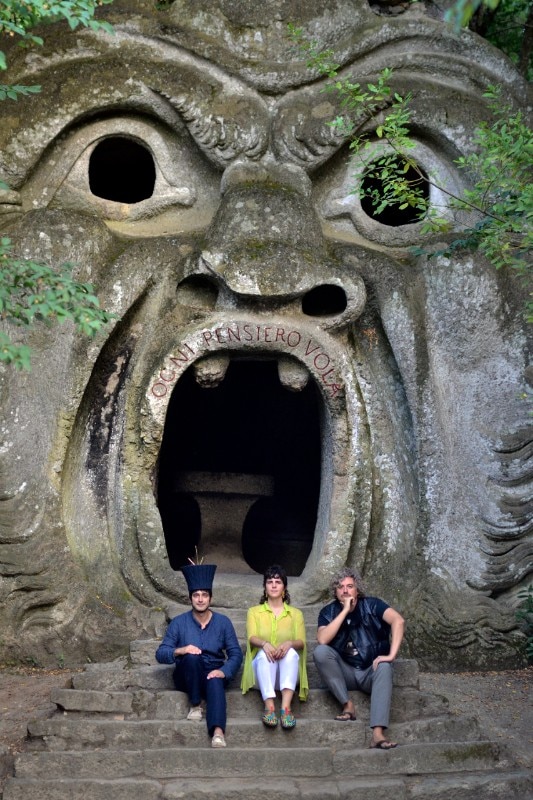
The idea of bringing the Sacred Wood to life with contemporary art comes from Vittoria de Franchis (who, as well as being communications manager at Terraforma, is also responsible for other visionary projects such as the residential workshop called Nuova Atlantide and Avantgardening digital festival). I have known Vittoria for a long time and I watched her develop the idea of contaminating one of the places that have been part of her life, that ancient and mysterious wood, with new artistic forms, which are part of her path. So, she has gathered a few collaborators, first and foremost her "partner" Giampaolo Scapigliati (aka Lamusa II) to make the impossible a reality, a divinatory dream, on the evening of 17 July 2021, under the good auspices of a Moon in Scorpio.
"I have always dreamed of organising a concert in the Sacro Bosco, exploring the narrative multidimensionality of Bomarzo and, above all, seeing the village filled with people who, like me, want to listen and tell stories that bring change about," Vittoria de Franchis tells Domus, adding that, to her, one of the most exciting things about "Una Cosa Mostruosa" was seeing people come, as the days went by, "from various parts of Italy (and even outside Italy!). They met by chance in the alleys and chatted about hermeticism and the Etruscans'. And then she says she dreams of Bomarzo becoming a point of reference for art, narrative, and research.
"Una Cosa Mostruosa is the creation of a locus amoenus, a fantasy-for-fantasy space but also a space for speculation and investigation". The project, she adds, is primarily intended to trigger a very concrete reflection on the contemporary, particularly on the ecology of the digital, through art. "I think that these kinds of surreal but also hyper-real spaces are fundamental, now more than ever, for generating alternatives that allow us to transform the tragedy in which we are living."
We had been hearing about this event for many months, before we could even sense it was possible, and perhaps, for this reason, I am sure that many people, like me, experienced the news of an actual date and the concrete possibility of buying a ticket with an emotional charge that went beyond the simple euphoria of attending real concerts after this virtuality hiatus. You could sense that it was going to be something different, something monstrous, according to the etymological sense of the word Monster "in its double etymology (portent and revealing)" as Vittoria pointed out in an interview with NOT.
We are used to assimilating pre-chewed content-slash-snacks that require zero effort from the user. We receive it every day in our feeds and, almost passively, we indulge our bulimia for input: images, concepts, and words that pass rapidly before our eyes, for the fifteen seconds of a story that lasts 24 hours and then disappears. Our concept of time is conditioned by this frenetic scanning of stimuli, and our organisms do not even have time to metabolise what they receive as they immediately have to move on to something else. The result is that we may be forgetting how to remember, and the very fact that remembering is a process that requires almost physical effort, requires us to stay in the moment and prolong this moment until it becomes a journey.
The truly monstrous part of what happened in Bomarzo this Saturday is the time it took to get there, first and foremost to those who worked to make it possible (a job that took months, in some cases years), but also to those who, like me, simply enjoyed it – just the time it took us to get to Bomarzo, added to the time-space of the path inside the Sacro Bosco, following step by step the initiatory path imagined by Vicino Orsini five centuries ago, which took us to the Tempio degli Iniziati, an enchanted place where our bodies were forgotten for the duration of the Etruscan 3D performance, a shamanic and fable-like ritual in which the word/myth melts into sound and everything rational becomes unreal.
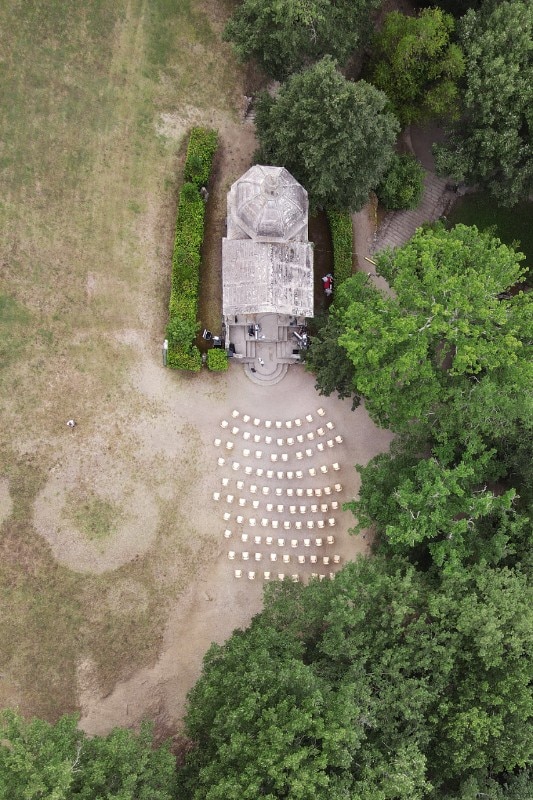
To make a long story short, we should probably allow ourselves to train our memory more often in order to remind ourselves that we are capable of going beyond the visible, beyond the boundaries of rationality and legibility, that inside us monsters or demons are roaring incomprehensible and ancestral words, the ones we are taught to be ashamed of when we leave the playground of childhood, the ones we are afraid of, the ones we make fun of because they go beyond the schemes with which we are used to organising the world.
Monsters wreak havoc, drag you into a fertile chaos that at first leaves you stunned – and I imagine this has happened to everyone who has taken part in this experiment – but at the same time overturns your perspective enough to make you wonder if perhaps we are living in the wrong upside down. Moments like this are not easy to create, it definitely takes an initial push from people who are not satisfied with contributing to the ordinary, but choose the winding road of the extraordinary, the fabulous, the monstrous. Thankfully. Long live the monsters!
Opening image: detail of Sacro Bosco di Bomarzo. Photo Giacomo de Franchis


